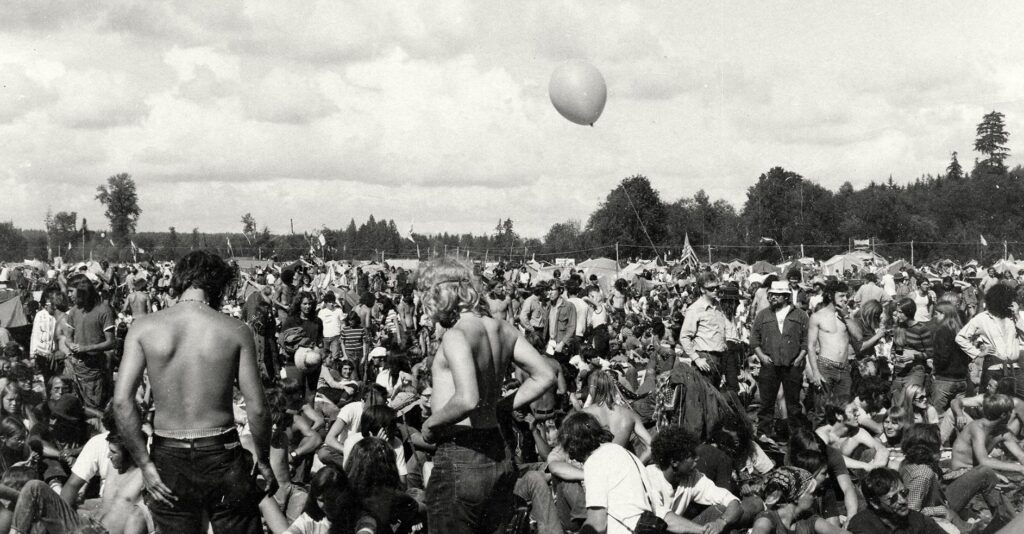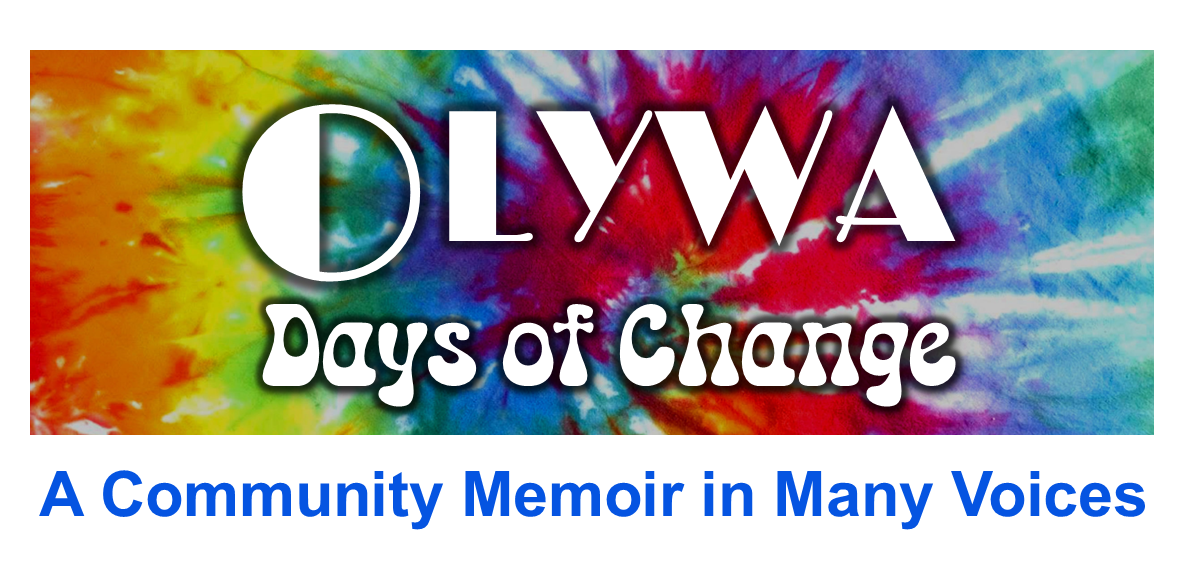VIGNETTES
Wild Days of Experimentation
By Pat Holm
Experimentation of many kinds went on starting with the late 1950s and continuing through the ’80s. Our music and what we wore were the things most visible to other generations. Lots of creativity was going on in our relationships and our denial of materialism. Times “were a changin’.”
In 1958, the communal household I moved into was advocating for a kind of group marriage where everyone would have sex with everyone (only two couples lived there while I was there). I was against this idea so they waited until I moved out to start this new custom. After talking recently with the leader of the group (who is now 91 and writing his own story) I found out that they indeed started the new sleeping regime almost immediately after I moved out. More women and men joined the group and they tried out the bed rotation. The women had the bedrooms and the men moved each night. This was in early 1960s and lesbian and gay sex were not part of it. The whole group living situation lasted at most two years.

“Why don’t we do it in the road,” was on the Beatles White Album, released to the world in 1968. That was when my husband of eight years walked out at the end of summer. He knew I was doing some other experimenting and said he had had enough of my unfaithful self.
This was a week before the state’s first rock festival in Sultan, Washington, northeast of Seattle. I just had to go and see for myself what this was. Carol Burns joined me and we took my 11-year-old daughter and her friend for a day.
Parking miles away along the side of the road, we walked and walked until we finally got to the edge of the Sky River Rock Festival. It was held on a raspberry farm on the Skykomish River. It happened over three days. We bought our tickets and proceeded to find a place to rest our bottoms and were treated with surround sound. Most people were clothed as I recall. Later, nudity at rock festivals was the reigning style. Author Tom Robbins, who hosted the radio show Notes From the Underground on KRAB radio in Seattle, was there, and he later recalled,
“I never saw a frown. Everyone was happy and smiling. It was such a utopian event. There was a feeling of freedom and sharing and loving.”
The line-up included such bands as the Grateful Dead, Santana, Country Joe and the Fish, and others. At least 4,000 – 5,000 young people showed up during the festival according to the news reports.
At a second rock festival the weather was warmer and there were lots of naked bodies. The third one was supposed to last a week or so, but was a dud according to an article on Wikipedia. The fourth and last festival happened in Satsop, Washington only about 20 miles from Olympia. I didn’t go to it as I was working a full time job.
“Washington State had just four rock festivals. The last one was named the Satsop River Fair and Tin Cup Races, and the site was the 77-acre Reality Farm on East Satsop Road. It was topographically ideal—sloping land formed a natural amphitheater that led down to the Satsop River. The farm was owned in part by Max Hausher and Bob Plaja, who described it as a ‘community’ comprising 16 people, 70 chickens, six ducks, and a pig. Reality Farm was paid $10,000 for the use of the land.
“First, the weather. It didn’t rain all the time, but it rained for days before the festival began and frequently during its first two days. Most of Reality Farm became a churned-up quagmire, and a stiff, chill wind often swept the site. The mud made for slippery walking, dampened the mood, and also hid sharp objects—mostly broken glass. The Open Door medical clinic on the site spent nearly as much time patching up cut feet as talking down bad trips. On Saturday a bus ferrying people between the site and parking lots up to 10 miles distant slid off a 30-foot cliff, injuring eight people seriously enough to require hospitalization, one by airlift.”
Walt Crowley, Rites of Passage: A Memoir of the Sixties in Seattle (Seattle: University of Washington Press, 1995), 110-112, 255.
In those days, music filled our ears as we did our housework. Listening to the latest Beatles album made dishwashing more pleasant. Movement and dancing was all prevalent. Decorating our households with Madras bed sheets for curtains, strings of beads hanging from doorways, and paper lanterns replaced more conservative furnishings. Going to thrift stores to buy ourselves velvets, brocades, and other unusual garments contributed to the making up of our costumes. The ’60s were a time of change. Done were the ’50s and their crass materialism and consumerism. We were rebelling against all of that. In 1964 men were still getting crewcuts. By 1965 many young men had stopped cutting their hair and were letting their locks flow freely down their backs.
A few years later (1970) I made pajama-like matching outfits out of Madras bed sheets for Steve Wilcox (my partner then) and me. Wide legs and wide sleeves with loud, crazy, colorful patterns. Very comfy. The opposite of a 3-piece suit and tie. We copied some verbiage in our joint journal, both signed it, and we considered ourselves married. A few years later when other women entered the picture and our “marriage vow” was just ignored, he would say, “What’s not okay about that?” Yet, when the goose tried it, it was a catastrophe. I was not happy with his experimentation. I was consumed with jealousy. One time he left me on his boat (the Tarry Not) anchored off an island while he took the dinghy to shore to do some “errands.” And I waited for hours and hours for his return.
By 1972, the book titled Open Marriage came out, and after reading it many were convinced it was the way to go. But the authors, a married couple, also believed in absolute truthfulness. Whatever that might mean. I think most affairs were conducted in private and only came out in the open when discovered. The New York Times in 1977 said the idea of open marriage “had not worked out for couples and the idea was dead.”
Although, I also remember one instance of a young man, a son of a Unitarian. He had a van that he lived in. He came to visit our neighborhood and found three willing females interested in testing out a young man’s virility. The other men were jealous and his van was not welcome in the neighborhood for very long.
Considering we were young and full of sexual energy, it seemed to ooze out all over the place. As we entered middle age, the Yuppie movement arose and we found other pursuits.
We encourage readers to use the form below to make comments and suggestions. Disclaimer
